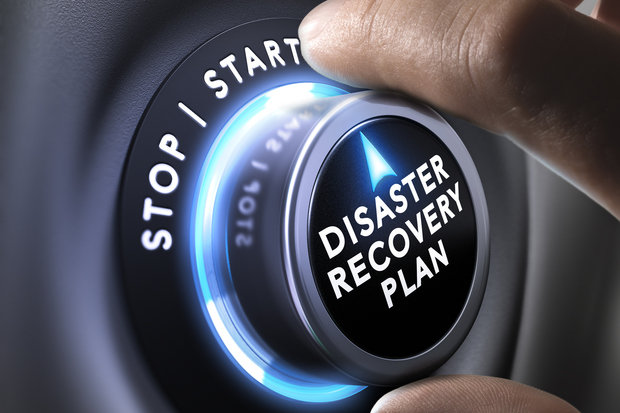Business Continuity Plan or BCP is one of the most important aspects of business after the fall of markets with Covid – 19, As we now that the year of 2020 is a worst nightmare we haven’t seen before the most critical year for all like human being and organization weather was MNC’s or SMB’s who suffered a huge lost. Families lost loved one, employees lost their jobs. It’s indeed, However, some business company have their BCP which is acronym of Business Continuity Plan that should tackle issues that arise during natural catastrophes.
Let’s us understand what actually BCP means?
A business continuity plan (BCP) is a document that explains how a company will continue to operate in the event of an unforeseen service outage. It is more extensive than a disaster recovery plan in that it includes contingencies for business processes, assets, human resources, and business partners — in short, any area of the organization that might be affected.
A Business Continuity Plan or it service continuity management is a type of contingency plan. It is a strategy that is customized particularly for your firm and should include the required actions to guarantee that your business continues to operate during and after a natural catastrophe. It combines strategic planning, operational planning, and financial planning. It is something that should involve every department of your company – and by “every department,” I mean ALL elements of your company should be appropriately represented in the creation of your BCP.
There are various business continuity strategy company can follow one of them include a checklist of supplies and equipment, data backups, and backup site locations is often included in plans. Plan administrators can also be identified, and contact information for emergency responders, important people, and backup site providers can be included. Plans may include comprehensive plans for maintaining business operations during both short-term and long-term disruptions.
A disaster recovery plan, which includes methods for dealing with IT interruptions to networks, servers, personal computers, and mobile devices, is an important component of a business continuity plan (BCP). The strategy should include how to reestablish office productivity and enterprise software in order to meet critical company demands. Manual workarounds should be included in the plan so that operations may continue until the computer systems are restored.
A business continuity strategy for critical applications and processes is comprised of three major components:
- High Availability: Business needs what capabilities and processes, however, business has access to application regardless of local failures. These failures may be in the process of the business, in the physical facilities or in the IT hardware or software.
- Continuous operation: Protect the ability to keep things operating in the event of an interruption, as well as during planned outages such as regular backups or planned maintenance.
- Disaster Recovery: There are many disaster recver and business continuity plan example which we will dicuss more in details in other blog post. But one need to make sure to create a way to recover your data center on the other hand if disaster destroys the primary site it becomes useless
Why BCP is Important for business?
A business continuity strategy is essential for identifying and addressing resilience synchronization across business processes, applications, and IT infrastructure. According to IDC, an infrastructure failure may cost up to $100,000 per hour, while a major application failure can cost up to $1 million per hour.
To survive and prosper in the face of these numerous dangers, organizations have learned that they must do more than build a dependable infrastructure that enables expansion and protects data. Companies are increasingly building extensive business continuity plans that can keep your company going, preserve data, defend the brand, and retain customers – all while helping to decrease total operating expenses in the long run. A business continuity strategy can help to reduce downtime and create long-term gains in business continuity, IT disaster recovery, corporate crisis management, and regulatory compliance.
However, building a complete business continuity strategy or bcp corporate strategy has grown more challenging as systems become more interconnected and spread across hybrid IT environments, presenting potential risks. Connecting more important systems to handle higher expectations challenges business continuity planning, as does disaster recovery, resiliency, regulatory compliance, and security. When one link in the chain fails or is attacked, the repercussions can be felt across the organization. If a company fails to maintain business resiliency while swiftly adapting and responding to threats and opportunities, it risks losing revenue and losing consumer confidence.
Features of BCP?
Key features of an effective business continuity plan (BCP). There are various components that need to taken care of while preparing an effective BCP for your business.
- Strategy: Strategy objects are those that is more related to your business strategies which you follow in order to complete day to day activities while making sure a continuous operations.
- Organization: These objectives are more related to employees responsibilities, the skills they processes, communication and so on….
- Applications and data: Software plays an important role in ensuring smooth business operations therefore a proper system in place can ensure you with more smooth working of business departments.
- Processes: Processes are the objects which are critical in nature to run your business therefore one need to ensure proper and standardized processes are in place for smooth operations.
- Technology: Systems, network and industry-specific technology is necessary to enable continuous operations and backups for applications and data.
- Facilities: In case of disaster recovery facilities object should be taken care off, as data and records plays an important role in business continuity.
The business continuity plan becomes a source reference at the time of a business continuity event or crisis and the blueprint for strategy and tactics to deal with the event or crisis.

